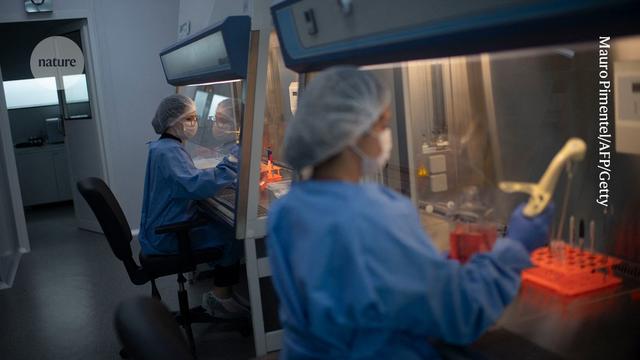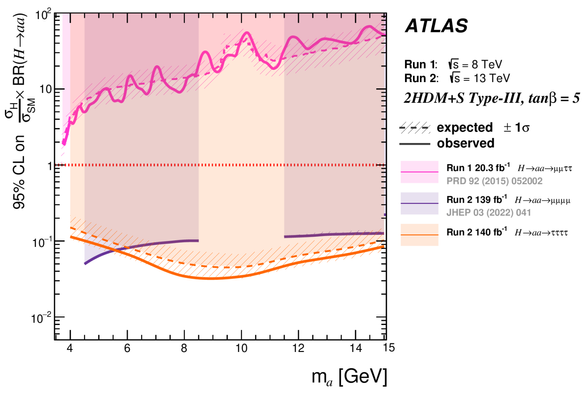Learning from the Tau
One of the peculiar features of the Standard Model of particle physics is that matter particles come in three “generations”. The familiar electron, for example, has two close relations: the (second generation) muon and the (third generation) tau lepton. According to the Standard Model, these three particles should be identical to each other apart from their masses. The muon is 200 times heavier than the electron and the tau is 17 times heavier still. Since in the Standard Model, interactions with the Higgs boson are responsible for the mass of fundamental particles, this means that only the Higgs knows the difference between the electron, the muon and the tau. It treats them very differently, interacting much more strongly with the tau than with the other two, for reasons that are not understood. This is partly why, in many possible extensions to the Standard Model, the third generation of particles – and the tau lepton in particular – plays a special role. The ATLAS Collaboration has published two new papers investigating the production of tau leptons in high energy proton-proton collisions. Taus are the trickiest leptons to measure because they do not live long enough to interact with our detectors. Physicists have to reconstruct their presence by measuring the particles produced when they decay while carefully removing background “fakes” – particles that mimic a decaying tau. One ATLAS study searched for four tau leptons, the other for two. The Higgs boson interacts much more strongly with the tau lepton than with the electron or muon – for reasons still unknown. The four-tau paper looked for evidence of new particles produced in pairs when a Higgs boson decays. Many new physics models introduce an additional particle that can mix with the Higgs boson. If this mixing happens, the new particle will decay into the heaviest particle it can, which is very often the tau. If the new particle is not too heavy, this leads to a distinctive signature in the ATLAS experiment where four taus are produced, travelling at a significant fraction of the speed of light. In such a case, the taus will travel in the same direction, leaving overlapping signatures in the detector and making them even more challenging to identify. No evidence for this was found (see Figure 1), and ATLAS researchers set new limits as low as 3% on the decay probability (branching fraction) of Higgs bosons decaying into pairs of new particles. This will help guide the ideas theorists explore next. This new result incorporated a new tau identification technique that significantly improved their ability to spot these highly energetic taus. Figure 1: Illustration of how the four-tau analysis extends the parameter range over which the hypothetical new particle “a”, produced in decays of the Higgs boson, is excluded, as a function of its mass. (Image: ATLAS Collaboration/CERN) Figure 2: The distribution (that is, differential cross section) of tau pairs as a function of the invariant mass of the hadrons produced in the decays of the two taus, compared to Standard Model predictions. (Image: ATLAS Collaboration/CERN) The two-tau paper also tested out some new ideas, this time motivated in part by some anomalies seen in hadron decays by the LHCb experiment. These anomalies could be a sign of new heavy particles called “leptoquarks” or exotic new bosons. The signatures in this study involved bottom quarks – another third-generation particle – as well as taus. Again, no evidence for these has been observed, and new constraints were set. In the two-tau paper, ATLAS physicists measured the production of tau pairs at high energies. For the first time in this process, they measured and corrected the detector resolution and efficiency to enable direct comparison between the data and any physics model without having to simulate the detector response. Figure 3: Comparison of the measured values of the c_τγ parameter, which characterises new EFT-based interactions between tau leptons and photons, between this analysis and constraints derived from previous tau-lepton magnetic dipole moments. (Image: ATLAS Collaboration/CERN) For the first time, researchers compared these data to Standard Model predictions and found they describe them very well (see Figure 2). These measurements also allowed physicists to search for possible deviations from the Standard Model using “Effective Field Theory” parameters. By fitting these EFT parameters to their measurements – including the presence of bottom quarks produced with the tau pair – physicists were able to probe a wide range of new physics scenarios at the same time and set new constraints. One of the tested parameters, for example, determines how the tau interacts with the photon. This interaction can also be probed in measurements of the magnetic dipole moment of the tau, and a comparison of the precision is shown in Figure 3. While neither study found evidence of physics beyond the Standard Model, they provided valuable new constraints on tau-lepton behaviour across a broad range of parameters. These results strengthened our understanding of the Standard Model and third-generation particles – underscoring how much remains to be learned from the tau lepton. Learn more Search for Higgs boson exotic decays into Lorentz-boosted light bosons in the four-τ final state at 13 TeV with the ATLAS detector (arXiv:2503.05463, see figures) Moriond 2025 presentation by Chris Pollard: Search for lepton flavour violation and SUSY particles at LHC A measurement of the high-mass ττ¯ production cross-section at 13 TeV with the ATLAS detector and constraints on new particles and couplings (arXiv:2503.19836, see figures) LHCb Collaboration: Test of lepton flavor universality using B0→D*−τ+ντ decays with hadronic τ channels (arXiv:2305.01463)






